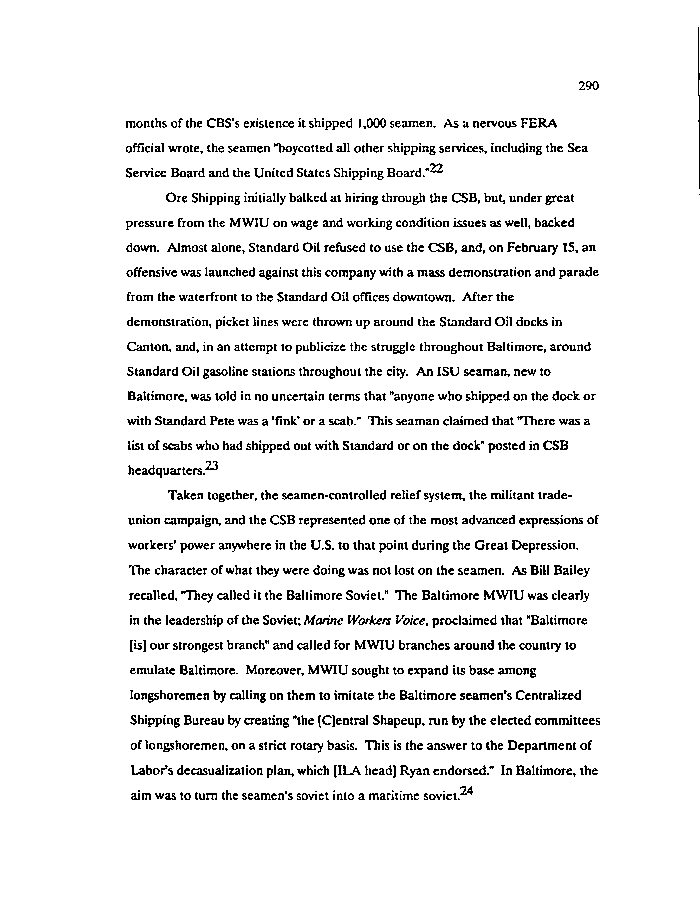|
290
months of the CBS's existence it shipped 1,000 seamen. As a nervous FERA
official wrote, the seamen "boycotted all other shipping services, including the Sea
Service Board and the United States Shipping Board."22
Ore Shipping initially balked at hiring through the CSB, but, under great
pressure from the MWIU on wage and working condition issues as well, backed
down. Almost alone, Standard Oil refused to use the CSB, and, on February 15, an
offensive was launched against this company with a mass demonstration and parade
from the waterfront to the Standard Oil offices downtown. After the
demonstration, picket lines were thrown up around the Standard Oil docks in
Canton, and, in an attempt to publicize the struggle throughout Baltimore, around
Standard Oil gasoline stations throughout the city. An ISU seaman, new to
Baltimore, was told in no uncertain terms that "anyone who shipped on the dock or
with Standard Pete was a 'fink' or a scab." This seaman claimed that There was a
list of scabs who had shipped out with Standard or on the dock" posted in CSB
oo
headquarters.
Taken together, the seamen-controlled relief system, the militant trade-
union campaign, and the CSB represented one of the most advanced expressions of
workers' power anywhere in the U.S. to that point during the Great Depression.
The character of what they were doing was not lost on the seamen. As Bill Bailey
recalled, They called it the Baltimore Soviet." The Baltimore MWIU was clearly
in the leadership of the Soviet; Marine Workers Voice, proclaimed that "Baltimore
[is] our strongest branch" and called for MWIU branches around the country to
emulate Baltimore. Moreover, MWIU sought to expand its base among
longshoremen by calling on them to imitate the Baltimore seamen's Centralized
Shipping Bureau by creating "the (C)entral Shapeup, run by the elected committees
of longshoremen, on a strict rotary basis. This is the answer to the Department of
Labor's decasualization plan, which [ILA head] Ryan endorsed." In Baltimore, the
aim was to turn the seamen's soviet into a maritime soviet.
|

